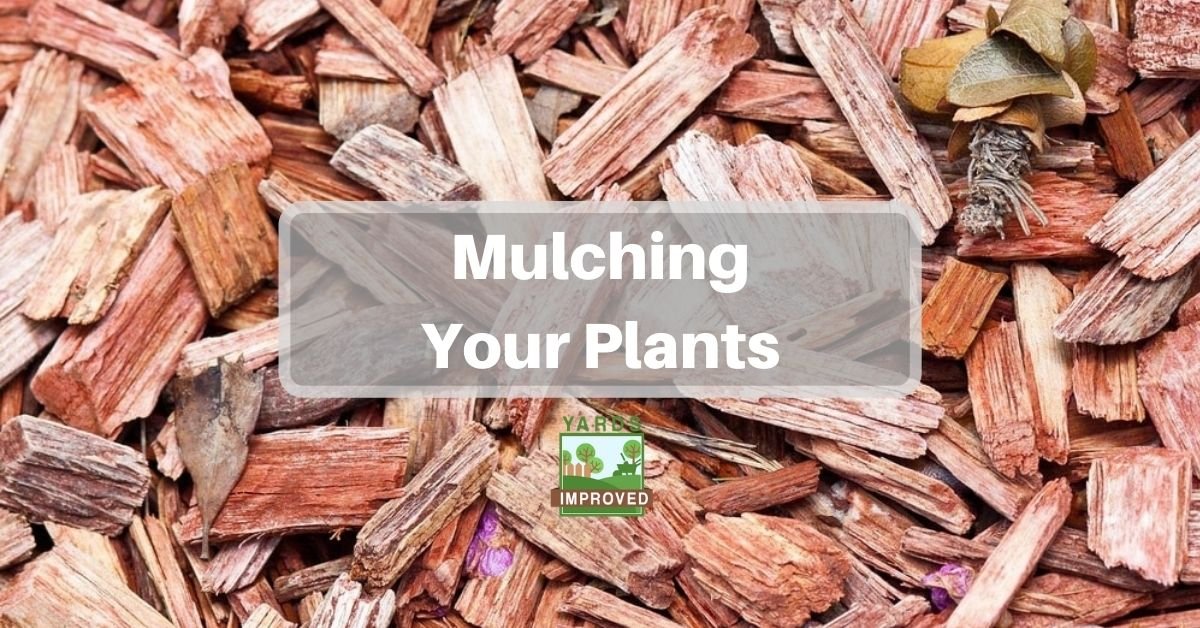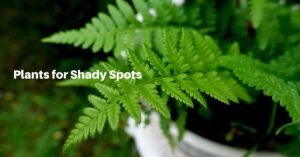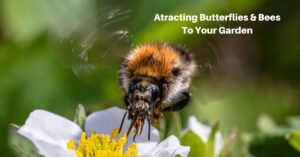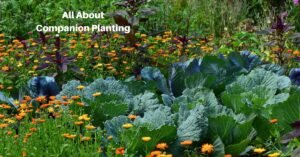“Mulch” is one of the most common terms related to gardening and lawn care. It seems that everyone knows what it is and how to do it. Of course, that isn’t the case. Mulching is important, but there’s no shame in not knowing how or why it works. It’s important, though, to get up to speed so that your trees, shrubs, and plants can thrive.
Even if you’ve been mulching for years, though, we hope you’ll find something new and useful here.
We’ll look at the purpose of mulching, kinds of mulch, and how and when to do it. Hopefully, this information will help you create an even more beautiful garden this year!
Why Mulch?
Mulching can serve a few purposes. Fortunately, they’re not mutually exclusive – you can cover a lot of bases at once.
A layer of mulch can help keep weed growth down. Since it covers the soil around your plant, weeds won’t have an easy time getting sunlight or nutrients that they need. They will, in a sense, be suffocated before they become a problem.
Mulch can also help keep the soil moist. All types of mulch cover the soil so the sun won’t be able to dry it out as quickly.
Of course, that also means the mulch is keeping the soil cooler. In hot climates – or even a hot stretch in a normally mild climate – roots and the base on plants can suffer from the heat. Mulch can provide some protection against that.
Organic mulch also helps fertilize the soil. As it decomposes, chemicals that are important to plants are reabsorbed.
Some types of mulch also serve as natural repellents to insects and other pests.
What Is Mulch?
Mulch is simply a material that’s spread around the base of a plant to help form a protective layer.
It may be organic or inorganic. Organic mulch normally has to be replaced yearly since it will break down over time. Inorganic mulch generally lasts longer and may just need some tidying from season to season.
Types of mulch
Among both organic and inorganic mulch, various materials can be used. Here are some of the most common, along with some of the benefits they bring.
Organic Mulch
Anything that comes from living material is considered organic. This means it will also decompose over time. But that can also be beneficial when you’re talking about mulches.
Most organic mulches won’t protect against pests, but they’ll protect soil from heat, hold in moisture, and fertilize the soil as they break down.
Here are some types of organic mulch:
Compost
Compost is a great way to recycle organic waste. The leaves, grass clippings, plant trimmings and other products that end up in your compost heap are ideal for mulching around your plants. This is probably the best way to fertilize your soil with mulch.
Learn how to compost with our simple guide!
Grass Clippings
Even if you don’t compost, you can still use your grass clippings as a layer of mulch. A lawnmower with a grass catcher makes this easy. It’s another great way to provide nutrients to the soil since it will break down quickly.
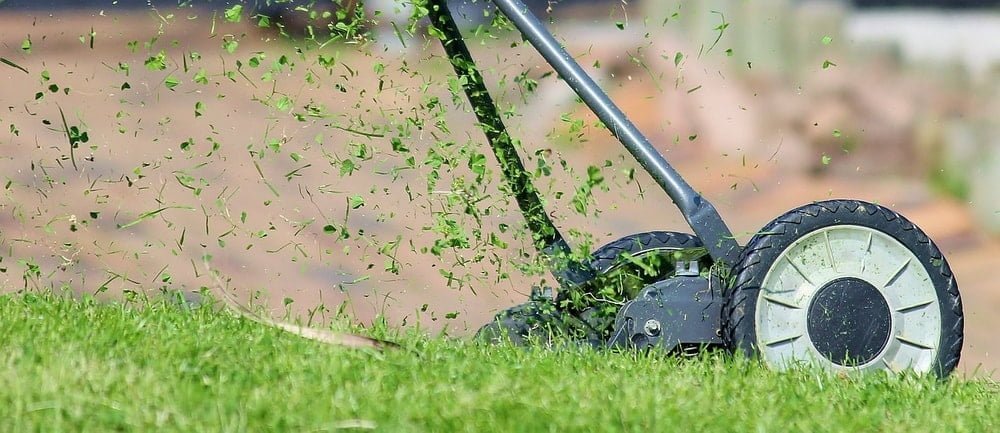
Leaves
Leaves make a wonderful mulch, especially when you need to prepare your plants for winter. You can usually gather more than enough from your yard. It’s best to chop them up – and that’s easily done with a lawnmower or a leaf vacuum with a mulcher attachment.
Hay or straw
Hay and straw are just dried grass. They do a great job of holding in the moisture. They also decompose relatively fast and add to the soil’s fertility.
Wood chips
Wood chips are a bit heavier than other types of mulch, and you probably won’t be cutting enough wood regularly to cover your mulching needs. But like other organic products, they’re fantastic for preventing evaporation. They do break down, but more slowly than other organic mulch. Most types will attract fewer insects. However, cedar and cypress wood chips will help repel many types of pests.
Inorganic Mulch
There are also inorganic mulches available. These last longer than their organic counterparts. They are great at keeping the soil cool, help cut back on weeds, and some can hold moisture in. Some are also more decorative than organic products. However, inorganic mulch doesn’t return any fertilizer to the soil.
Some common types of inorganic mulch are included below.
Plastic
Plastic is a practical alternative and serves mainly to prevent weed growth. You need to be sure it still allows water through and that the soil can breathe. It’s also not very attractive, so you’ll probably want to cover it with a more decorative material, too.
Landscape Fabric
Landscape fabrics offer some advantages over plastic. It’s still good at keeping weeds at bay, but it also allows air and water to pass through. We’d say it’s slightly less ugly than plastic, but you probably still want to cover it with something that looks better.
Stone
Stone and gravel are great for weed prevention and for letting air and water through. They also keep the soil cool. It’s heavy but otherwise easy to work with.
When To Mulch
Depending on the type of mulch you use and the results you want, you may want to mulch twice a year.
It’s best to apply organic mulch in late spring or early summer. This will protect the roots during the hottest part of the year. It also helps assure that the ground doesn’t dry out too quickly.
If you’re using inorganic mulch, you can do it before the first frost of late fall. It will slow the freezing process of the soil. This is also a good time to replace the first round of organic mulch or to make it deeper for added protection.
Tools for Mulching
The tools you’ll need for mulching depend on the type of mulch you’ll be spreading, of course.
We recommend using a wheelbarrow to carry your mulch and tools no matter what type you’re using, although you may not need it if you’re using plastic or landscaping fabric and don’t have multiple rolls of material to carry.
If you’re using organic mulch or stone, you’ll need a shovel and a rake, preferably a bow rake. With these two tools, you’ll be able to move it around at the base of your plants.
For plastic or landscaping fabric, be sure to have a strong pair of scissors on hand so you can fit the material to the area and also to cut holes for your plants to grow through. For plastic, you might also want something that will allow you to punch holes through it. Scissors could work, but a screwdriver might be easier (and safer) to handle.
Mulch is usually sold by the yard. One yard means that it will cover a square yard at about 3 inches deep.
Laying Your Mulch
Before anything else, you want to do a thorough job of weeding in the area where you’ll spread mulch. Even though the mulch will help keep weeds from coming up, it can work more effectively if you don’t just cover up what’s already there.
Next, mark off the area where you’ll spread the mulch. It’s best to have it slightly submerged to help contain the mulch. This will help keep loose mulch from spreading into your grass or other others. Since you’ll likely be covering plastic or fabric, it’s good to have it below the level of the surrounding lawn since you’ll likely be covering it up.
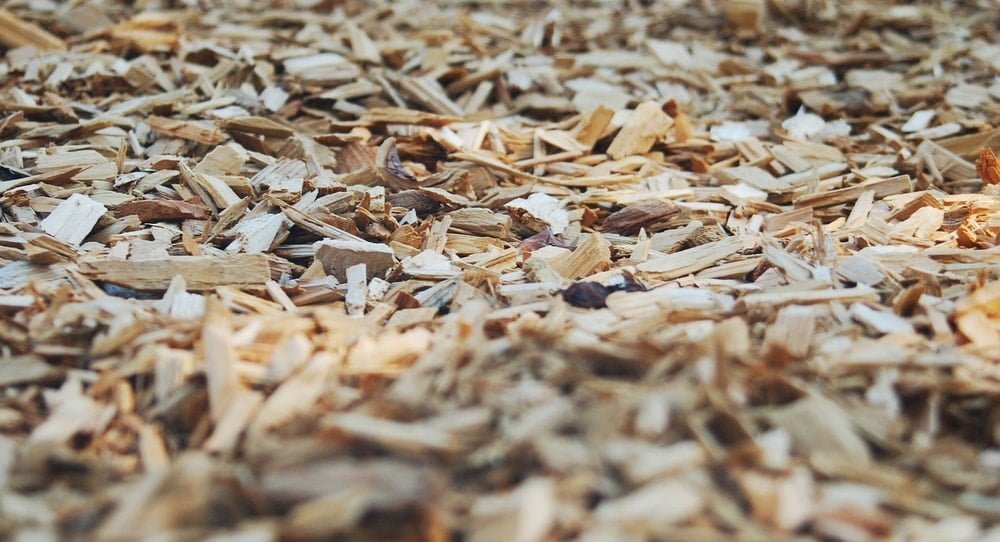
For organic mulch or stone, shovel it slowly into the depression you’ve created. Spread it with your rake so that it’s even across the area and so that it reaches right up to the stalk or trunk of the plant. The mulch should be about 2 – 4 inches (5 – 8 cm) thick.
In the case of fabric or plastic, you’ll have to do a bit of cutting to get it to fit in your space. The edges between pieces should overlap by a couple of inches to help prevent weeds. And unless your plant is very narrow at its widest point, you’ll probably want to cut a straight line from the edge of the material, then a circle in the middle. That way you can fit it around the plant rather than trying to pass it over the top.
In the case of plastic, it’s important to provide enough drainage. Be sure to poke lots of holes to allow water through – the water that your plants need to survive. If you see water accumulating on the plastic after it’s installed, poke more holes.
Organic mulch, even wood chips, will need yearly replacement. Inorganic will last longer – you can replace it whenever it starts to look beat-up. You can add new organic mulch or stone on top of an old layer, too. But remember that it will mix over time, so it’s best to add the same time or remove the old mulch first to keep a consistent look.
Conclusion
Mulch is important to help protect your trees and plants. It can help keep the soil moist, keep weeds down, and provide some protection against the heat and cold. Some types can even keep pests away and aid in fertilizing the soil. It doesn’t take long to apply and has an enormous upside. And with the right touches, it can even make your garden look fantastic!

